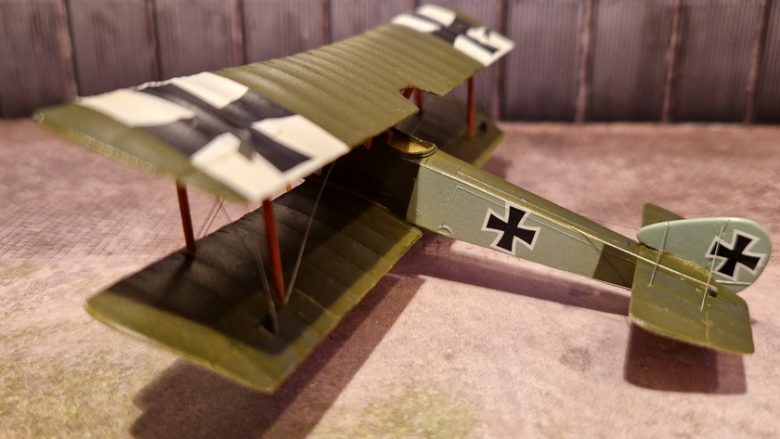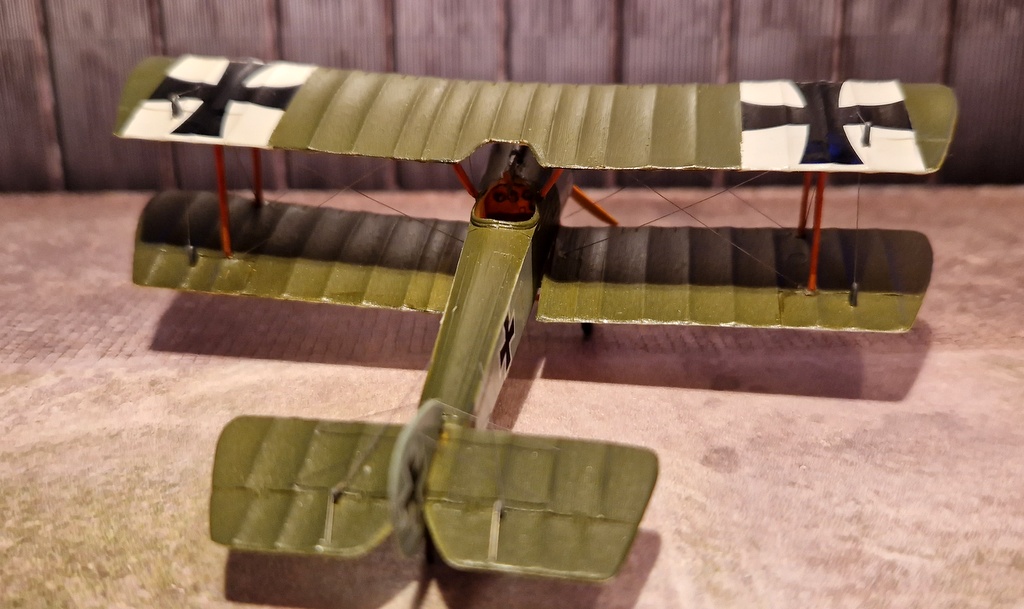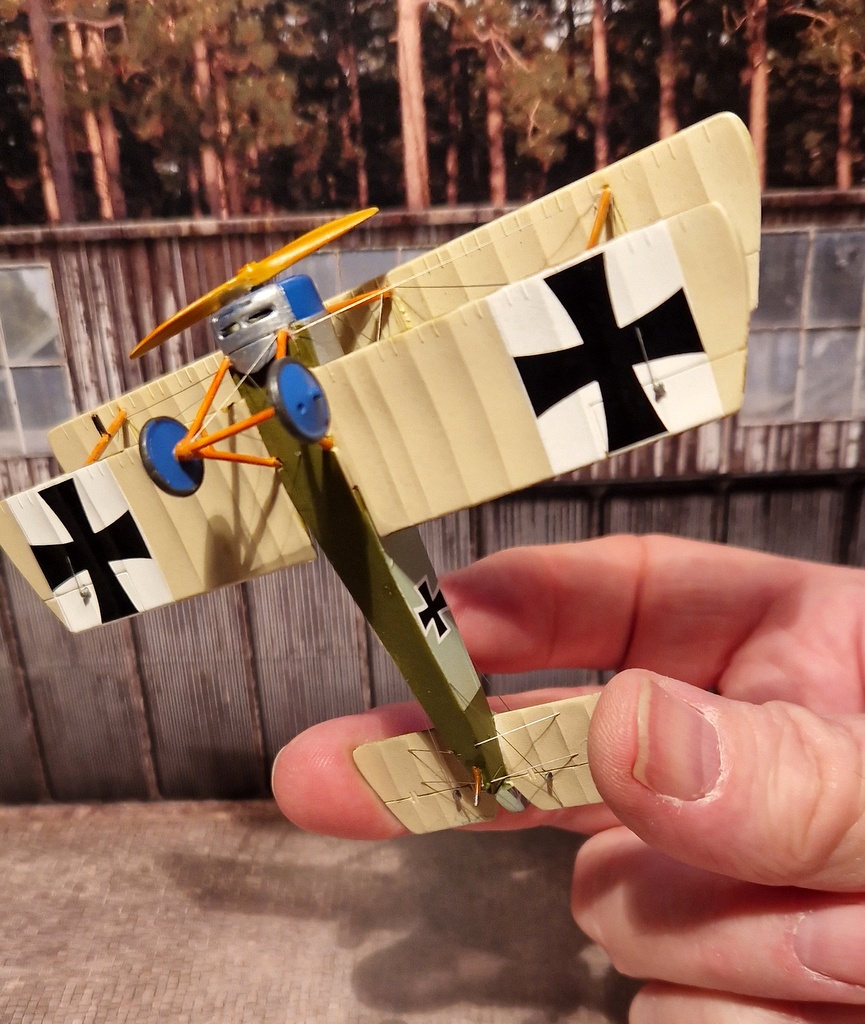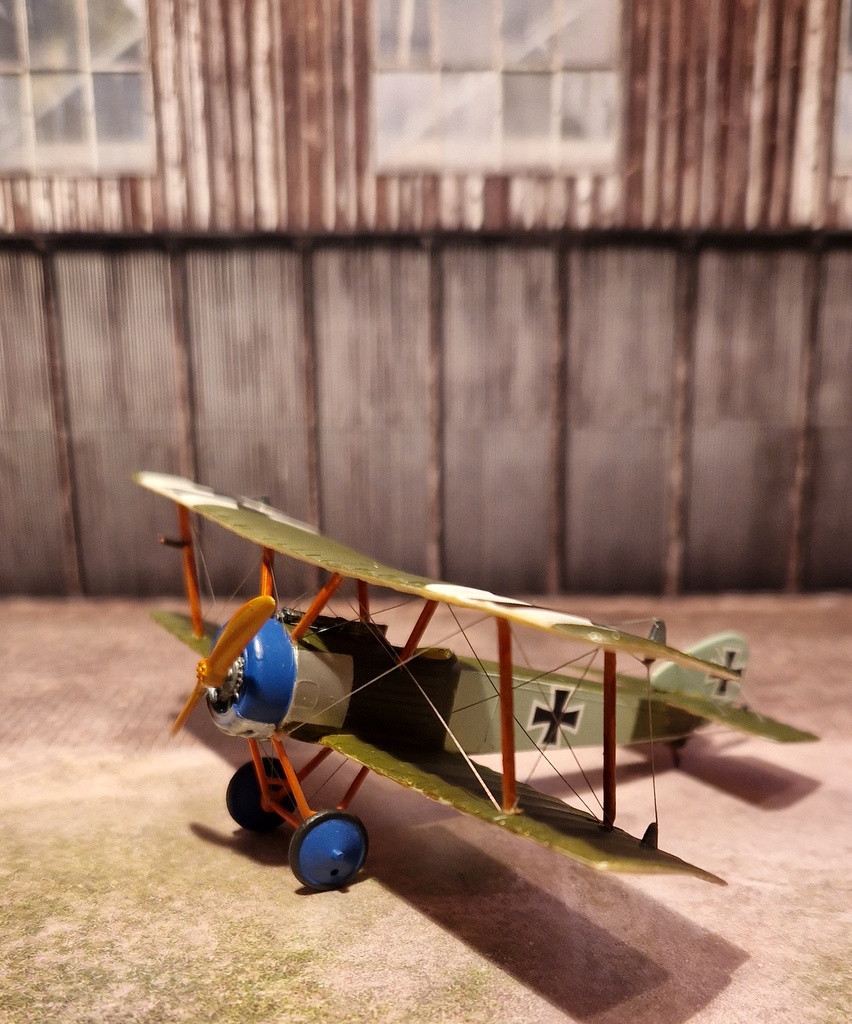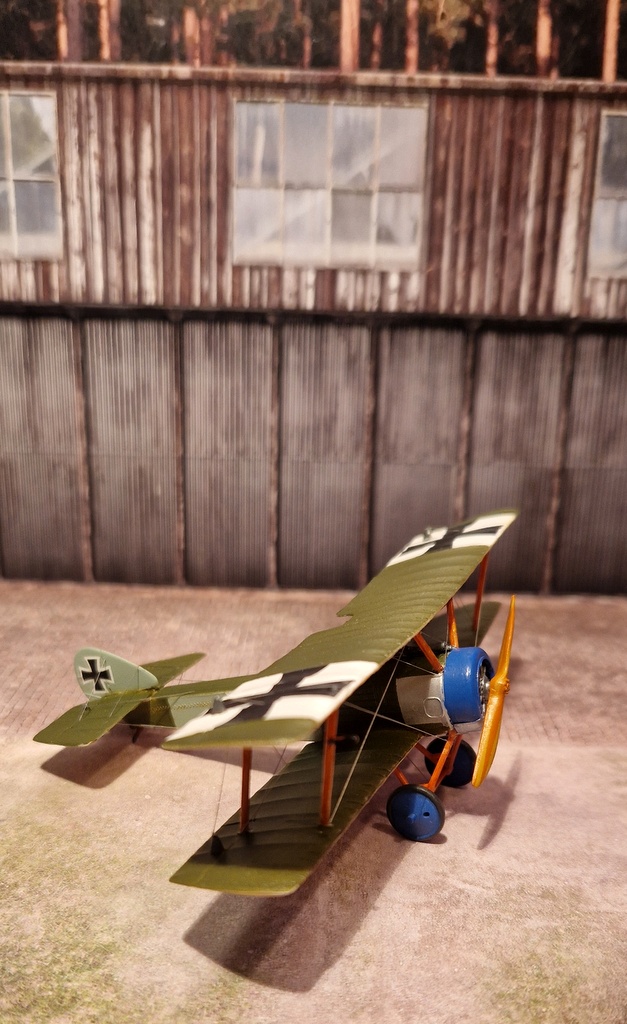This is the Airfix Sopwith Pup, originally released in 1973. It’s one of Airfix’s better WW1 kits if not their best. It’s been a ‘Hanger Queen’ for over 40 years. It’s built as out of the box with Tamiya tape as seat belts and 0.122 wire used to rig it. I purchased decals depicting it captured by the Germans, the decals were from Pheon. So a little history about the real aircraft. It was built by the Standard Motor Co. of Coventry as part of contract 87A/461. It was flown to France in May of 1917 and was allocated to 54 Sqn. R.F.C. where it received the number 3 on the fuselage. Its career with the R.F.C. was short lived as it was lost in action on the 30th of May .
Il s’agit de l’Airfix Sopwith Pup, sorti à l’origine en 1973. C’est l’un des meilleurs kits WW1 d’Airfix, sinon leur meilleur. C’est une « Hanger Queen » depuis plus de 40 ans. Elle est fabriquée « from in the box » avec du ruban Tamiya comme ceinture de sécurité et du fil de 0,122 utilisé pour la gréer. J’ai acheté des décalcos représentant la photo prise par les Allemands, les décalcos chez étaient de Pheon. Donc, un peu d’histoire sur le véritable avion. Il a été construit par la Standard Motor Co. de Coventry dans le cadre du contrat 87A/461. Il a été envoyé en France en mai 1917 et a été attribué au 54 Esc. R.F.C. où il a reçu le numéro 3 sur le fuselage. Sa carrière avec le R.F.C. a été de courte durée car il a été perdu au combat le 30 mai.
It was being flown at this time by Lt. ‘Fred’ Kantel, a Canadian from Toronto. He was a respected rower in Canada and at the age of 25 when he enlisted, he was already married. He had enlisted in the Canadian Field Artillery in 1915 and was shipped to the UK with his unit. As his unit was not being sent to France as a complete unit but being sent as piece meal replacements to other units he applied to join the R.F.C. He received training at 39 Reserve Sqn. in Scotland, 55 reserve Sqn. at Yatesbury, 63 Sqn. at Cramlinton before being posted to 2nd AD Candas pilot pool on the 7th of May 1916. He was then posted on the 11th of May to 54 Sqn where he would be flying Sopwith Pups. He flew on a number of missions before being forced down on the 30th of May. He with another five pilots from 54Sqn. were on a protection flight, escorting some FE2 who were carrying out a photography and reconnaissance patrol. On the way home, having completed their mission his engine began to misfire and he fell behind his comrades. He was then attacked by a number of aircraft from Jasta 6. Unable to escape with a misfiring engine he was forced down behind German lines near Ponchause east of Beaurevoir. His aircraft was virtually intact when he landed and he was immediately surrounded by German troops and captured.

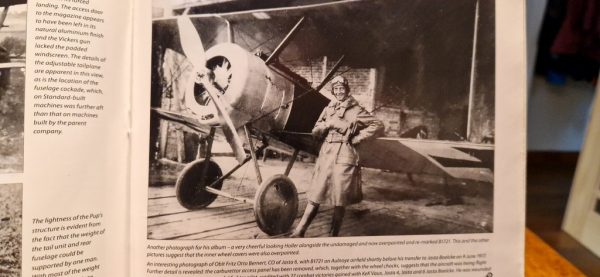
Il était piloté à ce moment-là par le lieutenant de vaisseau Fred Kantel, un Canadien de Toronto. A l’âge de 25 ans lorsqu’il s’est enrôlé, il était déjà marié. Il s’était enrôlé dans l’Artillerie de campagne canadienne en 1915 et a été expédié au Royaume-Uni avec son unité. Comme son unité n’était pas envoyée en France comme unité complète, mais comme renfort à d’autres unités, il a demandé à se joindre au R.F.C. Il a reçu une formation au 39 Esc Réserve. en Écosse, 55 Esc Réserve à Yatesbury, 63 Esc. à Cramlinton avant d’être affecté au 2e pool pilote AD Candas le 7 mai 1916. Il a ensuite été affecté le 11 mai au 54e escadron où il piloterait Sopwith Pups. Il a participé à un certain nombre de missions avant d’être forcé à descendre le 30 mai. Il était accompagné de cinq autres pilotes de 54Sqn. étaient sur un vol de protection, escortant certains FE2 qui effectuaient une patrouille de photographie et de reconnaissance. Sur le chemin du retour, après avoir terminé leur mission son moteur est tombé en panne et il est tombé derrière ses camarades. Il a ensuite été attaqué par un certain nombre d’avions de Jasta 6. Incapable de s’échapper avec un moteur présentant de nombreuses ratées. Il s’est psé derrière les lignes allemandes près de Ponchause à l’est de Beaurevoir. Son avion était pratiquement intact quand il a atterri et il a été immédiatement entouré par les troupes allemandes et capturé.
His victor was Vzfw C Holler of Jasta 6. Carl was born on the 26th of July 1884 in Rendsburg Germany. Prior to WW1 he was a professional folk singer who performed under the stage name of Niels Sorenson. Like many German fighter pilots he began his flying career as a two seater pilot before transferring to Fighter School after which he flew Fokker Eindeckers with various groupings before the Jasta system was set up. He was later transferred to Jasta 6 where he initially flew Albatros D.I and D.II . He survived the war.
All the information for this short article was obtained from Cross & Cockade International , ‘the First World War Aviation Society’, Spring issue Vo 43/ and the Air Britain book of the Sopwith Pup.
Son vainqueur était Vzfw C Holler de Jasta 6. Carl est né le 26 juillet 1884 à Rendsburg en Allemagne. Avant la Première Guerre mondiale, il était un chanteur folk professionnel qui jouait sous le nom de Niels Sorenson. Comme de nombreux pilotes de chasse allemands, il a commencé sa carrière en tant que pilote biplace avant de passer à l’école de chasse, après quoi il a piloté des Fokker Eindeckers avec divers groupements avant la mise en place du système Jasta. Il a ensuite été transféré à Jasta 6 où il a d’abord piloté Albatros D.I et D.II. Il a survécu à la guerre.
Tous les renseignements pour ce court article ont été obtenus auprès de Cross & Cockade International, “the First World War Aviation Society”, Spring issue Vo 43/ et le livre Air Britain du Sopwith Pup.
Tous les renseignements pour ce court article ont été obtenus auprès de Cross & Cockade International, “the First World War Aviation Society”, Spring issue Vo 43/ et le livre Air Britain du Sopwith Pup.
Cheers All
Topo, photos et montage: Joe M, IPMS IRLANDE

